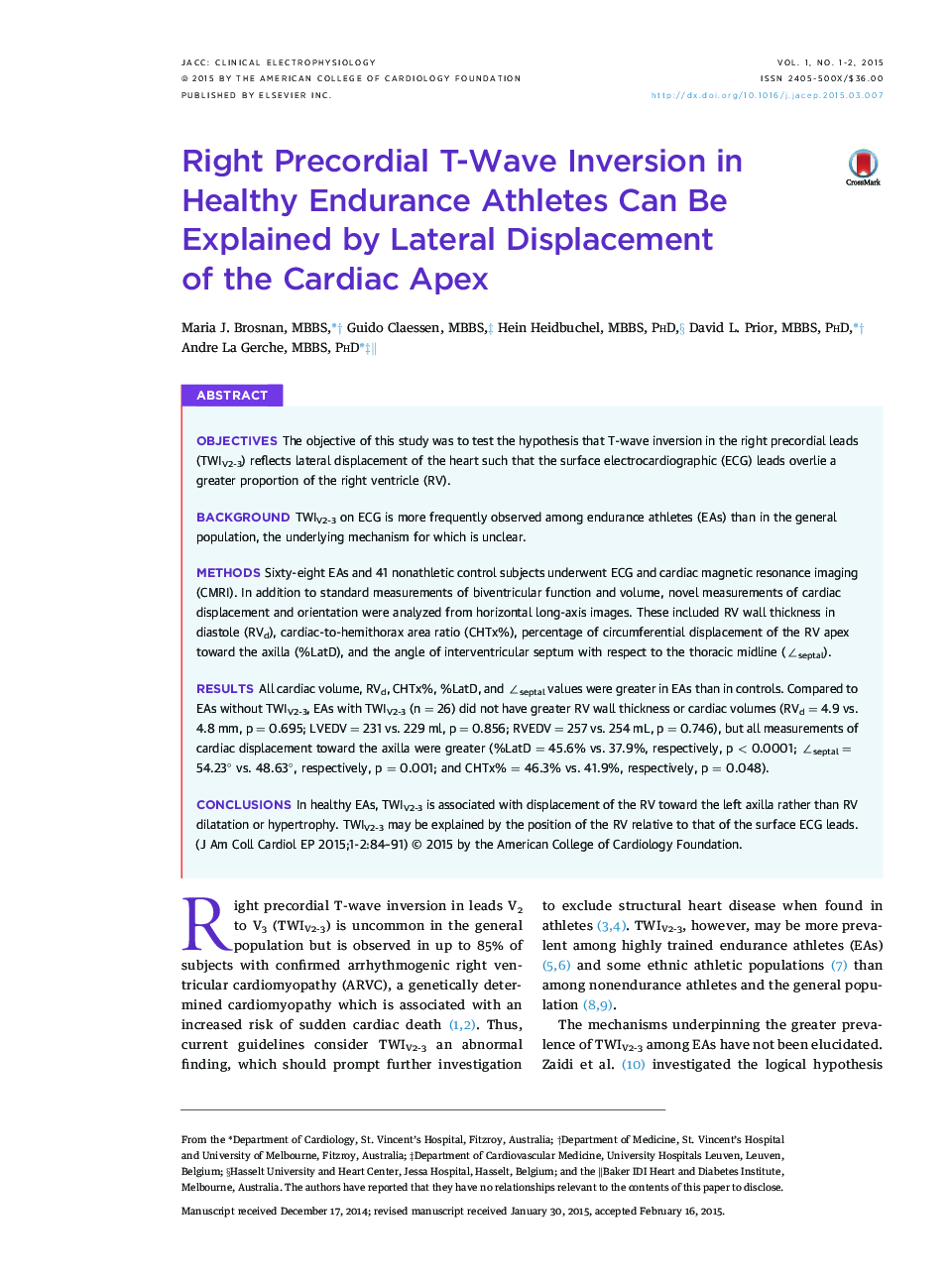| Article ID | Journal | Published Year | Pages | File Type |
|---|---|---|---|---|
| 2942295 | JACC: Clinical Electrophysiology | 2015 | 8 Pages |
ObjectivesThe objective of this study was to test the hypothesis that T-wave inversion in the right precordial leads (TWIV2-3) reflects lateral displacement of the heart such that the surface electrocardiographic (ECG) leads overlie a greater proportion of the right ventricle (RV).BackgroundTWIV2-3 on ECG is more frequently observed among endurance athletes (EAs) than in the general population, the underlying mechanism for which is unclear.MethodsSixty-eight EAs and 41 nonathletic control subjects underwent ECG and cardiac magnetic resonance imaging (CMRI). In addition to standard measurements of biventricular function and volume, novel measurements of cardiac displacement and orientation were analyzed from horizontal long-axis images. These included RV wall thickness in diastole (RVd), cardiac-to-hemithorax area ratio (CHTx%), percentage of circumferential displacement of the RV apex toward the axilla (%LatD), and the angle of interventricular septum with respect to the thoracic midline (∠septal).ResultsAll cardiac volume, RVd, CHTx%, %LatD, and ∠septal values were greater in EAs than in controls. Compared to EAs without TWIV2-3, EAs with TWIV2-3 (n = 26) did not have greater RV wall thickness or cardiac volumes (RVd = 4.9 vs. 4.8 mm, p = 0.695; LVEDV = 231 vs. 229 ml, p = 0.856; RVEDV = 257 vs. 254 mL, p = 0.746), but all measurements of cardiac displacement toward the axilla were greater (%LatD = 45.6% vs. 37.9%, respectively, p < 0.0001; ∠septal = 54.23° vs. 48.63°, respectively, p = 0.001; and CHTx% = 46.3% vs. 41.9%, respectively, p = 0.048).ConclusionsIn healthy EAs, TWIV2-3 is associated with displacement of the RV toward the left axilla rather than RV dilatation or hypertrophy. TWIV2-3 may be explained by the position of the RV relative to that of the surface ECG leads.
